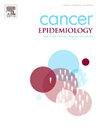2002-2021年佛罗里达州早发性结直肠癌的趋势和特征
IF 2.3
3区 医学
Q3 ONCOLOGY
引用次数: 0
摘要
早发性结直肠癌(EOCRC),定义为50岁之前的诊断,是一个日益受到关注的公共卫生问题。尽管全国年轻人的发病率在上升,但对佛罗里达州具体州的分析仍然有限。佛罗里达州人口众多,人口结构独特,因此有必要对EOCRC趋势和患者特征进行调查。这项基于人群的研究利用了2002年至2021年间诊断为25-49岁的佛罗里达州居民的结直肠癌发病率数据,这些数据来自佛罗里达州癌症数据系统和国家癌症登记项目。结合点回归评估了人口统计学和临床因素中年龄调整后的发病率趋势。年龄-时期-队列分析探讨了代际效应,而多变量逻辑回归确定了与晚期诊断(区域性或远距离)相关的因素。结果2002-2021年发现的16318例EOCRC病例中,总发病率显著增加(AAPC=1.48 %,P <; )。001),主要由结肠癌驱动(AAPC=1.53 %,P <; )。直肠癌无显著升高(AAPC=0.53 %,P = 0.185)。诊断时出现了令人担忧的晚期转移(P <; 0.001),局部疾病从32.8% %下降到26.2% %,而局部(34.6-41.0 %)和远处转移(21.9-26.8 %)显著增加。区域(AAPC=2.10 %,P <; )显著增加证实了这一阶段迁移。001)和远处病变(AAPC=2.71 %,P <; )。001)发生率。强烈的出生队列效应,表明近期队列中发病率比超过2.0的风险增加,在非西班牙裔白人中尤为明显。相反,西班牙裔和非西班牙裔黑人患者没有明显的队列效应,但与非西班牙裔白人相比,他们始终表现出更高的晚期疾病几率(AOR分别为1.13和1.11)。没有保险的患者(AOR=1.23)和有医疗补助的患者(AOR=1.52)与有私人保险的个体相比,有明显更高的晚期表现的几率。结论2002 - 2021年,佛罗里达州EOCRC发病率持续上升,伴晚期诊断率上升,且差异显著。出生队列效应主要导致非西班牙裔白人人群的风险增加,而及时护理的障碍,包括保险状况,可能导致少数民族社区的诊断延迟,强调迫切需要有针对性的干预措施。本文章由计算机程序翻译,如有差异,请以英文原文为准。
Trends and characteristics of early-onset colorectal cancer in the state of Florida, 2002–2021
Background
Early-onset colorectal cancer (EOCRC), defined as diagnosis before age 50, is a growing public health concern. Despite increasing national incidence among younger adults, state-specific analyses for Florida remain limited. Florida's large and demographically unique population necessitates investigation into EOCRC trends and patient characteristics.
Methods
This population-based study utilized colorectal cancer incidence data for Florida residents aged 25–49 diagnosed between 2002 and 2021, from the Florida Cancer Data System and National Program of Cancer Registries. Joinpoint regression evaluated age-adjusted incidence trends across demographic and clinical factors. Age-period-cohort analysis explored generational effects, while multivariate logistic regression identified factors associated with advanced-stage diagnosis (regional or distant).
Results
Among 16,318 EOCRC cases identified during 2002–2021, overall incidence increased significantly (AAPC=1.48 %, P < .001), driven primarily by colon cancers (AAPC=1.53 %, P < .001), while rectal cancers showed non-significant increase (AAPC=0.53 %, P = 0.185). A concerning shift toward advanced stages at diagnosis emerged (P < 0.001), with localized disease decreasing from 32.8 % to 26.2 %, while regional (34.6–41.0 %) and distant metastases (21.9–26.8 %) increased substantially. This stage migration was confirmed by significant increases in regional (AAPC=2.10 %, P < .001) and distant disease (AAPC=2.71 %, P < .001) incidence. Strong birth cohort effects, indicating increasing risk with rate ratios exceeding 2.0 for recent cohorts, were evident predominantly in non-Hispanic White individuals. Conversely, Hispanic and non-Hispanic Black patients showed no significant cohort effects but consistently presented with higher odds of advanced-stage disease compared to non-Hispanic Whites (AOR=1.13 and AOR=1.11, respectively). Uninsured (AOR=1.23) and Medicaid-covered patients (AOR=1.52) faced significantly higher odds of advanced presentation compared to privately insured individuals.
Conclusion
Florida experienced sustained EOCRC incidence increases from 2002 to 2021, accompanied by advanced-stage diagnosis increases and notable disparities. Birth cohort effects primarily drove increased risk in non-Hispanic White populations, while barriers to timely care, including insurance status, likely contributed to delayed diagnoses in minority communities, underscoring urgent needs for targeted interventions.
求助全文
通过发布文献求助,成功后即可免费获取论文全文。
去求助
来源期刊

Cancer Epidemiology
医学-肿瘤学
CiteScore
4.50
自引率
3.80%
发文量
200
审稿时长
39 days
期刊介绍:
Cancer Epidemiology is dedicated to increasing understanding about cancer causes, prevention and control. The scope of the journal embraces all aspects of cancer epidemiology including:
• Descriptive epidemiology
• Studies of risk factors for disease initiation, development and prognosis
• Screening and early detection
• Prevention and control
• Methodological issues
The journal publishes original research articles (full length and short reports), systematic reviews and meta-analyses, editorials, commentaries and letters to the editor commenting on previously published research.
 求助内容:
求助内容: 应助结果提醒方式:
应助结果提醒方式:


